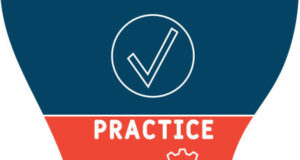
Tech Talk: Glossary of Emerging Terms Every Case Manager Should Understand
BY DR. COLLEEN MORLEY, DNP, RN, CCM, CMAC, CMGT-BC, CMCN, ACM-RN, FCM, FAACM
Let’s face it—healthcare today is swimming in tech jargon. We hear words like predictive analytics, AI, NLP and interoperability tossed around in meetings, vendor demos and webinars. Sometimes, it feels like we’re expected to be both clinical experts and data scientists. But here’s the thing: While we don’t need to become coders or IT specialists, we do need to be conversant in the language of digital transformation.
Why? Because technology is reshaping our work as case managers. Whether you’re coordinating care in an acute hospital setting, managing transitions for a complex pediatric patient, or supporting a senior aging in place with the help of remote monitoring tools, chances are you’re already interacting with tech—knowingly or not. And understanding the terminology allows us to engage more confidently, advocate more effectively, and ultimately do what we do best: deliver patient-centered, coordinated care.
So, grab your coffee and settle in. This is your go-to starter glossary of emerging healthcare technology terms—curated specifically for the real-world case manager.
| Term | Definition | Why It Matters |
| Artificial Intelligence (AI) | Software that mimics human reasoning and decision-making. In healthcare, AI supports diagnosis, care coordination and even administrative workflows. | Enhances efficiency by helping prioritize cases or predict risk, enabling smarter interventions. |
| Predictive Analytics | Uses historical and real-time data to forecast health outcomes. | Helps identify who is at highest risk for readmission or ED visits; crucial for managing limited resources. |
| Interoperability | The seamless sharing and interpretation of information between different health systems. | Ensures complete and timely information to manage complex care transitions. |
| Natural Language Processing (NLP) | Allows software to “read” unstructured data like physician notes or social worker documentation. | Helps identify SDOH needs or health trends not captured in checkboxes. |
| Digital Health Ecosystem | The interconnected set of platforms, portals and devices that support modern care delivery. | Understanding this helps troubleshoot and navigate across care settings. |
| Remote Patient Monitoring (RPM) | Devices that collect and transmit patient data (e.g., blood pressure, weight) from home to providers. | Supports early intervention and chronic disease management. |
| Digital Therapeutics (DTx) | Evidence-based, clinically validated software that delivers medical interventions. | Case managers must integrate these tools, such as prescribed apps, into care plans. |
| Clinical Decision Support (CDS) | Automated tools that guide clinical decisions based on evidence and protocols. | Reduces variation in care and flags high-risk patients for follow-up. |
| Care Orchestration | Digital coordination of referrals, follow-ups and documentation across care settings. | Eliminates manual bottlenecks and improves discharge efficiency. |
| Patient-Generated Health Data (PGHD) | Data from patients via wearables, apps or surveys. | Adds depth to assessments and identifies trends in health behaviors. |
| Digital Front Door | Online portals, symptom checkers and tools that patients use to initiate contact with healthcare services. | Supports self-navigation and early engagement. |
| Telehealth | Remote delivery of healthcare services via video or phone. | Increases access, reduces no-show rates, and facilitates virtual case conferences. |
| Health Equity by Design | A framework ensuring that tech tools are built to reduce, not exacerbate, disparities. | Helps identify and address barriers to tech access. |
| Digital Divide | The gap in access to technology due to socioeconomic, geographic or literacy factors. | Impacts patient engagement with portals, RPM or telehealth. |
| Ethical AI | Designing AI that is transparent, fair and unbiased. | Case managers must challenge tools that unfairly flag patients based on flawed data. |
| API (Application Programming Interface) | Enables different software systems to share data efficiently. | Smooth connections reduce delays and improve information accuracy. |
| Voice Recognition Tools | Speech-to-text tools used for clinical documentation and patient interaction. | Reduces screen time and supports hands-free note entry. |
| Blockchain in Healthcare | A secure, transparent method of storing data that cannot be altered retroactively. | May improve security in information exchange. |
| Data Literacy | The ability to read, analyze, and apply data in decision-making. | Drives care planning, resource allocation and performance metrics. |
| Augmented Reality (AR) | Technology that overlays digital information in a physical space. | May support patient education or remote home safety assessments. |
| Machine Learning (ML) | A subset of AI that enables computers to improve with new data. | Continuously refines tools that predict patient needs or behavior. |
| EHR Optimization | Refining electronic health records for usability and workflow. | Improves documentation efficiency and team collaboration. |
| Population Health Management (PHM) | Using data and tools to proactively manage care for defined populations. | Helps intervene early for chronic and high-risk patients. |
| Interoperable Care Plan | A digital care plan accessible across systems by all care team members. | Ensures everyone has access to the same care goals and updates. |
| Workflow Automation | Using tech to complete routine, repetitive tasks automatically. | Frees up time for clinical judgment and patient engagement. |
Closing Thoughts
If this list feels a bit overwhelming, take heart. You don’t need to master all 25 terms today—but you do need to start the journey. Think of this glossary as your tech survival guide. Tape it to your desk. Bring it to your next project meeting. Reference it when a new acronym pops up in your inbox.
More importantly, see it as a sign that your role is expanding—not disappearing—in a world of digital healthcare. The heart of case management remains the same: advocacy, assessment, coordination and compassion. Technology, when understood and applied thoughtfully, is an extension of our values—not a replacement.
Let’s lean in, learn together and lead the way forward.
References
Aspelund, K., Gerum, P. C. L., Uberoi, M. N., Lieber, P., Ellis, D. C., & Grzegorzewski, M. (2021). The basics of big data terminology. Big data for generals… and everyone else over, 40, 21-9.
Harishbhai Tilala, M., Kumar Chenchala, P., Choppadandi, A., Kaur, J., Naguri, S., Saoji, R., & Devaguptapu, B. (2024). Ethical Considerations in the Use of Artificial Intelligence and Machine Learning in Health Care: A Comprehensive Review. Cureus, 16(6), e62443. https://doi.org/10.7759/cureus.62443
Jiang, F., Jiang, Y., Zhi, H., Dong, Y., Li, H., Ma, S., … & Wang, Y. (2017). Artificial intelligence in healthcare: past, present and future. Stroke and Vascular Neurology, 2(4), 230–243. https://doi.org/10.1136/svn-2017-000101
Melnyk, O., Ismail, A., Ghorashi, N. S., Heekin, M., & Javan, R. (2023). Generative artificial intelligence terminology: a primer for clinicians and medical researchers. Cureus, 15(12).
Mohammadhassanzadeh H, Sketris I, Traynor R, Alexander S, Winquist B, Stewart SA. (2020). Using Natural Language Processing to Examine the Uptake, Content, and Readability of Media Coverage of a Pan-Canadian Drug Safety Research Project: Cross-Sectional Observational Study, JMIR Formative Research;4(1):e13296 doi: 10.2196/13296
Reddy, S., Fox, J., & Purohit, M. P. (2019). Artificial intelligence-enabled healthcare delivery. Journal of the Royal Society of Medicine, 112(1), 22–28. https://doi.org/10.1177/0141076818815510
Shickel, B., Tighe, P. J., Bihorac, A., & Rashidi, P. (2018). Deep EHR: A survey of recent advances in deep learning techniques for electronic health record (EHR) analysis. IEEE Journal of Biomedical and Health Informatics, 22(5), 1589–1604. https://doi.org/10.1109/JBHI.2017.2767063
Verghese, A., Shah, N. H., & Harrington, R. A. (2018). What this computer needs is a physician: Humanism and artificial intelligence. JAMA, 319(1), 19–20. https://doi.org/10.1001/jama.2017.19198
Wang, Y., Kung, L. A., & Byrd, T. A. (2018). Big data analytics: Understanding its capabilities and potential benefits for healthcare organizations. Technological Forecasting and Social Change, 126, 3–13. https://doi.org/10.1016/j.techfore.2015.12.019
 Dr. Colleen Morley, DNP, RN, CCM, CMAC, CMGT-BC, CMCN, ACM-RN, FCM, FAACM, is the associate chief clinical operations officer, care continuum for University of Illinois Health System and the immediate past president of the Case Management Society of America National Board of Directors and president-elect of CMSA Chicago. She has held positions in acute care as director of case management at several acute care facilities and managed care entities in Illinois, overseeing utilization review, case management and social services for over 14 years; piloting quality improvement initiatives focused on readmission reduction, care coordination through better communication and population health management. Her current passion is in the area of improving health literacy. She is the recipient of the CMSA Foundation Practice Improvement Award (2020) and ANA Illinois Practice Improvement Award (2020) for her work in this area. Dr. Morley also received the AAMCN Managed Care Nurse Leader of the Year in 2010 and the CMSA Fellow of Case Management designation in 2022. Her first book, A Practical Guide to Acute Care Case Management, published by Blue Bayou Press, was released in February 2022. Her second book, Practical Guide to Hospital Readmission Reduction, published by Blue Bayou Press was released in February 2024. Her third book, Practical Guide to Acute Care Case Management Leadership, is in the works, targeting publication in 2025. Dr. Morley celebrates 25 years of nursing experience and 20 years in case management in 2024. Her clinical specialties include med/surg, oncology and pediatric nursing. She received her ADN at South Suburban College in South Holland, Illinois; BSN at Jacksonville University in Jacksonville, Florida, MSN from Norwich University in Northfield, Vermont, and her DNP at Chamberlain College of Nursing.
Dr. Colleen Morley, DNP, RN, CCM, CMAC, CMGT-BC, CMCN, ACM-RN, FCM, FAACM, is the associate chief clinical operations officer, care continuum for University of Illinois Health System and the immediate past president of the Case Management Society of America National Board of Directors and president-elect of CMSA Chicago. She has held positions in acute care as director of case management at several acute care facilities and managed care entities in Illinois, overseeing utilization review, case management and social services for over 14 years; piloting quality improvement initiatives focused on readmission reduction, care coordination through better communication and population health management. Her current passion is in the area of improving health literacy. She is the recipient of the CMSA Foundation Practice Improvement Award (2020) and ANA Illinois Practice Improvement Award (2020) for her work in this area. Dr. Morley also received the AAMCN Managed Care Nurse Leader of the Year in 2010 and the CMSA Fellow of Case Management designation in 2022. Her first book, A Practical Guide to Acute Care Case Management, published by Blue Bayou Press, was released in February 2022. Her second book, Practical Guide to Hospital Readmission Reduction, published by Blue Bayou Press was released in February 2024. Her third book, Practical Guide to Acute Care Case Management Leadership, is in the works, targeting publication in 2025. Dr. Morley celebrates 25 years of nursing experience and 20 years in case management in 2024. Her clinical specialties include med/surg, oncology and pediatric nursing. She received her ADN at South Suburban College in South Holland, Illinois; BSN at Jacksonville University in Jacksonville, Florida, MSN from Norwich University in Northfield, Vermont, and her DNP at Chamberlain College of Nursing.
Image credit: ISTOCK.COM/MF3D




